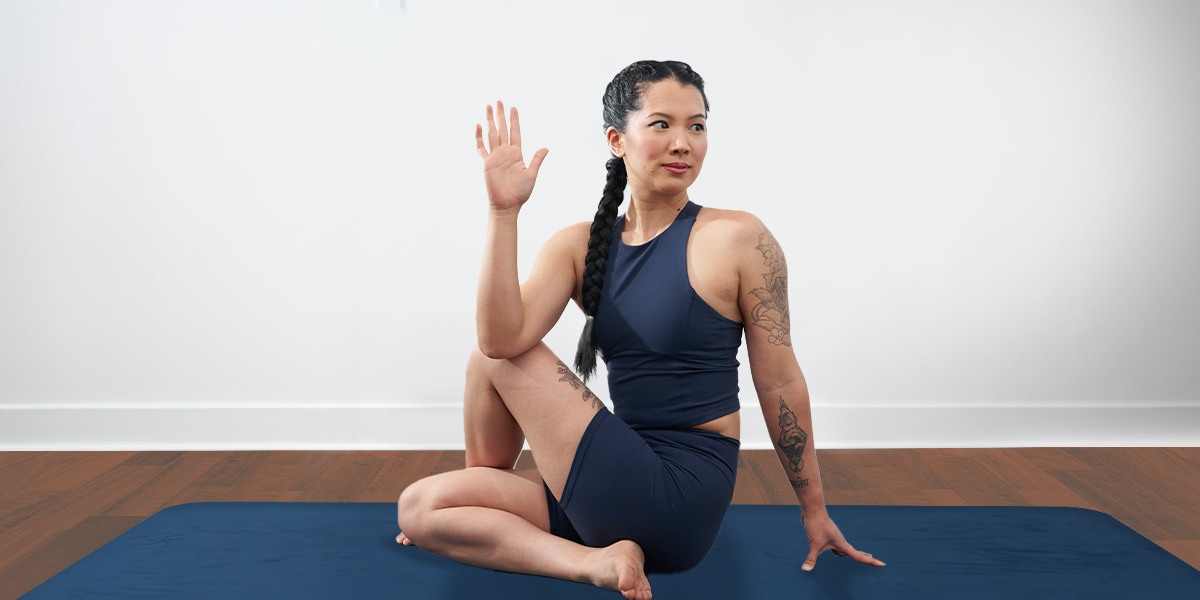Listen to Your Body: How to Find Healthy Challenge in Your Yoga Practice

You’ve heard it before in class. “Listen to your body!” Everyone around you is doing sixteen variations of Crow pose and the world is upside down. This casually thrown-out phrase is the one reminder that your yoga practice, ultimately, is about you and your body.
“Okay, yeah, totally,” you think to yourself, drenched with what is most likely not just your own sweat, “but how?” The words echo in your brain, yet you’re still scratching your head at what it means. Class ends. You go home. You lie awake in bed. Sleepless nights ensue. “What does it mean?” you cry in the night, “What does it all mean?!”
Alright, I’ll be serious now: listening to your body is not a pointless buzz-phrase. It’s an invaluable skill within your yoga practice! It allows you to make real-time adjustments based on how you feel. Without it, we run the risk of mindlessly going through our practice. Then we push too hard and get injured. Or we push too little, and we stagnate.
Understanding the importance and applying it are two different things. How do we determine what feels right for us on any given day?
We all have our motivations for stepping onto the yoga mat. While personal intentions differ, when it comes to the physical aspect of the practice, we have to take on some objective considerations.
Here are five key questions to ask yourself during your yoga practice to gauge if you’re pushing too hard, going too easy, or if you’re finding optimal balance:
How’s your breathing?
Pay attention to your breathing patterns and remember that cultivating a mindful connection to breath is a big part of what makes yoga, yoga. Aim for a steady, rhythmic breath, even when it’s challenging. If you notice you’re holding your breath or breathing too fast, that’s a good indicator that it’s time to slow down or take a break!
Is it productive work or pain?
Productive work in your physical practice can come from “feeling the burn,” experiencing a deep stretch, or mild tenderness from massage-type pressure. This type of work often creates a broader sensation that generally stops when you stop the pose or action. Pain, however, feels sharp or acute, and worsens as you hold the pose.
To put it simply: if you’re making a face, gritting your teeth, or wincing, then ease off, make adjustments, or find a suitable variation through the help of your teacher.
Where do you feel it?
Notice where you feel sensation in your muscles & joints. Compression generally refers to a feeling of compactness, squeezing, or “stuff running into stuff” around the joint. Feeling a deep pinch in your front hip in a low lunge is an example of compression. Tension refers to a stretching or elongation sensation in the muscle belly, like what you feel in your hamstrings in a forward fold.
Most often in yoga, we’re guided to look for tension instead of compression, but extremes to either end can indicate you’re pushing too hard. Ask your yoga teacher for options to help you find balance and check out this handy little graphic below:
What are your thoughts and feelings?
Beyond physical sensations, check in on your mental and emotional landscape. Are you judging or comparing yourself to others? Are you feeling frustrated or competitive? These thoughts are a normal part of the human experience but can be a sign you’re losing sight of the essence of yoga: self-compassion, acceptance, and non-judgment.
Take a moment to reset, cultivate a mindset of kindness towards yourself, and remember that your yoga practice is a journey, not a destination.
How do you feel after your practice?
How you feel after class matters, too! For example, you may leave feeling invigorated, energized, calm, or centered (or all of the above!). However, if you feel constantly exhausted or depleted after class, you may need to slow down, incorporate more rest days, or choose less vigorous practices.
Regularly checking in and engaging in self-inquiry is a part of yoga. Use these questions to help you navigate the line between finding your edge and going over it. Most importantly, remember you don’t have to navigate these questions alone! That’s what your yoga teacher is there for. Check-in with your teacher and ask for guidance to find a healthy challenge in your practice. A good teacher can provide variations, adjustments, or feedback to suit your individual needs.
The yoga journey is, at its core, one of self-discovery, growth, and being present. Listening and embracing your body and mind’s signals allows you to honor your unique needs and deepen your connection to yourself and your practice.